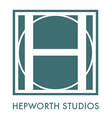MOVING TOWARDS ABSTRACTION
|
This course is designed for students passionate about exploring the theories and techniques that underpin abstraction, equipping them with the skills to intentionally integrate abstraction into their independent artistic practice.
The course is delivered in two parts. Part A – Deconstruction of Form - Term 4 – 2023 In the initial phase of the course, students will engage in five stand-alone studies that explore various approaches to the deconstruction of form. These studies serve as the foundation for understanding the evolution of abstraction in art, paving the way for creative experimentation. Part B - Independent Abstract Investigation- Term 1 - 2024 Building on the foundational knowledge gained in Part A, Part B offers students the opportunity to hone their independent focus. Within a supportive and mentored class framework, participants will embark on their unique abstract investigations, pushing the boundaries of their creative expression. Theoretical Exploration Throughout the course, all creative activities are thoughtfully intertwined with accessible theoretical investigations. We will delve into the development of abstraction, drawing inspiration from the Modernist movements of Cubism, Der Blaue Reiter, Futurism, De Stijl, Colour Field and more. By tracing the deconstruction of representation in art, we will understand how and why abstraction evolved, a transformation that became an inevitable outcome after centuries of artists striving to capture visual reality. We will examine how artists of the Modernist movement distanced themselves from traditional systems of patronage and forged Avant guard paths that embraced independent practice and experimentation. This shift necessitated the abandonment of representation and the rejection of prescribed narratives. Understanding this historical context will help enrich your artistic perspective and give context to abstraction that goes beyond pattern building. Artistic Evolution Each lesson will focus on a particular movement and collection artists, with focus on how they approached the deconstruction and reconstruction of form. Following the theoretical introduction we move into a series of structured practical activities in drawing, painting and mixed media in order to explore particular techniques with focus on colour, movement and composition. These artistic investigations form the basis of small mosaic studies which are completed between classes. Contemporary Application While the Modernist movement has now past, its underlying philosophies and techniques continue to resonate in contemporary artistic practice. This course empowers you to apply these considered techniques to your chosen themes and subjects helping to springboard your mosaic practice. |
Prerequiste Knowledge
This course is best suited to students who have completed Andamento Level 4 and above. Minimum prerequisite of Andamento Level 3 or equivalent study which includes understanding Classical Andamento (Level 1), Contemporary Andamento (Level 2), as well as a comprehensive understanding of Colour Theory (Level 3). If you are not sure if this is suitable for you, please contact me to discuss. What's Included
1. 10 hours of live tuition. 2. Access to lesson recordings during the course. 3. Written feedback on each task. 4. Extras recordings, tips, tricks, research links. 5. Access to the Class Padlet for class image sharing. 6. Access to our Private FB Group. |
|
Technology Required
1. You will need and stable internet connection. 2. Live classes are presented live via ZOOM. You will need to DOWNLOAD ZOOM for free and ensure it is kept up to date. 3. Class notes, video links, PDF resources and communication will be via Google Classroom. Students will be sent a link to join a free online classroom. 4. Classes are LIVE and all classes are recorded. Students have access to the classroom and recordings for several months after the course for consolidation and completion of samples. 5. Each class has access to a class Padlet - this is an online sharing and collaboration space for creatives. Students are encouraged to share their work here, post questions and encourage one another. |
LEVEL 6 - Basic materials needed
You may need other props or resources for preparatory studies however no specialty items are required. Any tesserae is suitable - you can make it work by now ;) |
Dates and Times
PART A - Term 4 2023SYDNEY TIME: 1pm - 3pm (AEDT)
1. Wednesday 25th Oct 2. Wednesday 8th Nov 3. Wednesday 22nd Nov 4. Wednesday 6th Dec 5. Wednesday 20th Dec Course Fee: $295 AUD Fully Booked for Term 4 |
Other time zonesNew Zealand : 3pm - 5pm Wed
25th Oct, 8th Nov, 22nd Nov, 6th Dec, 20th Dec US Pacific Time: 7pm - 9pm Tues 24th Oct - 7pm - 9pm 7th Nov - 6pm - 8pm 21st Nov - 6pm - 8pm 5th Dec - 6pm - 8pm 19th Dec - 6pm - 8pm Note: USA Daylight Savings Ends 5th Nov. After 5th Nov the class will start one hour earlier. To work out your individual class time I recommend you use timeanddate.com |

